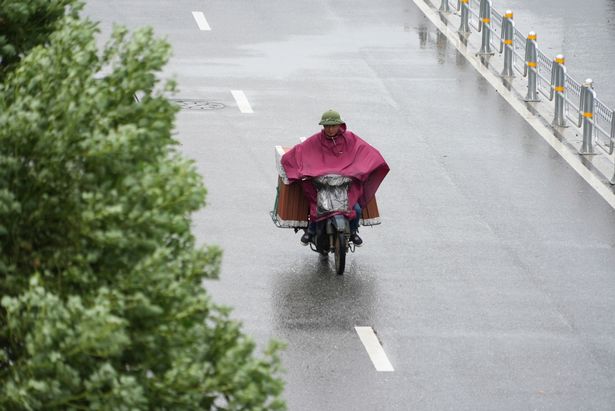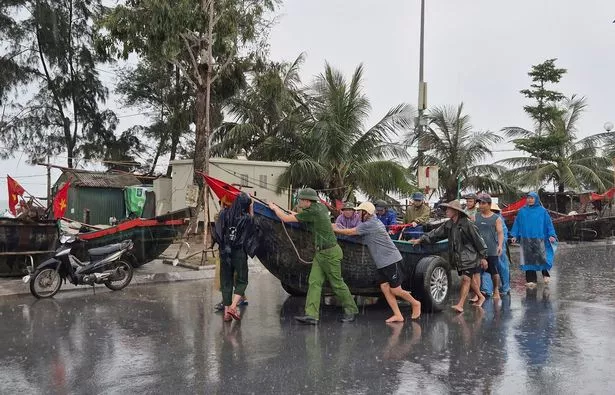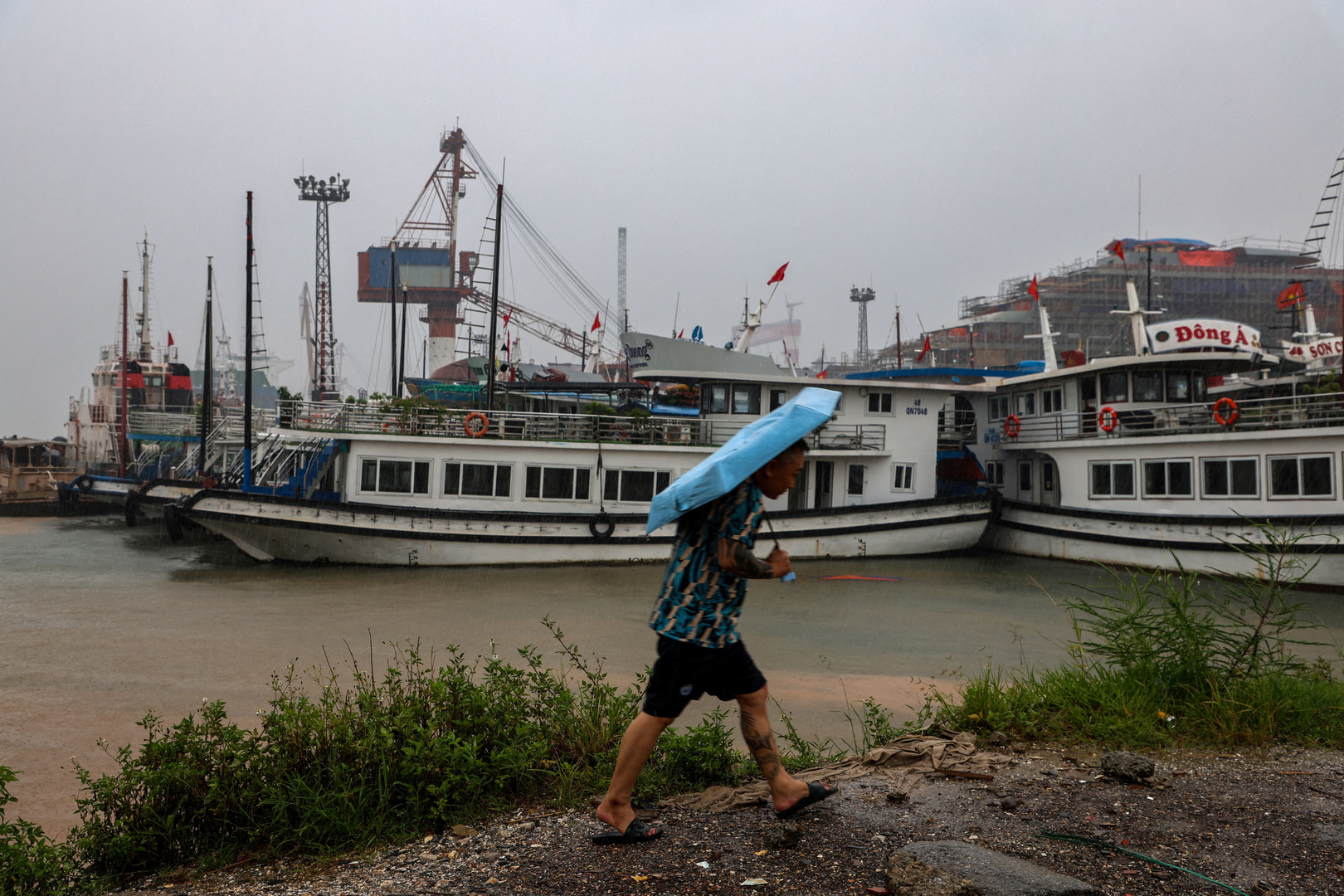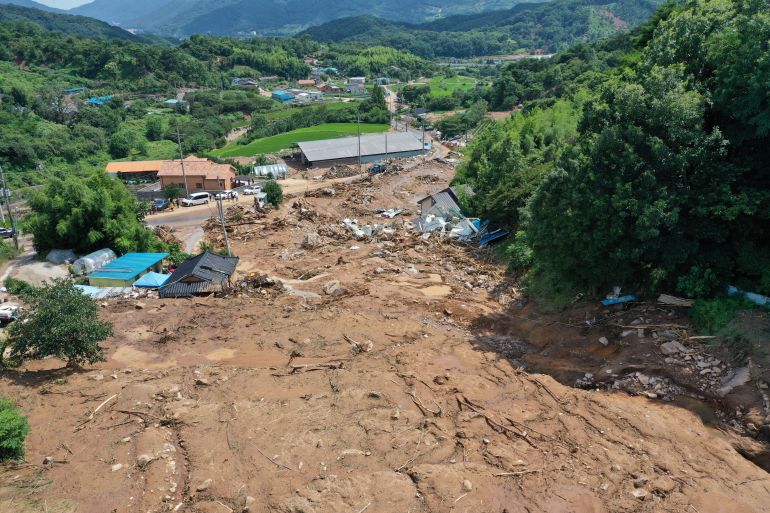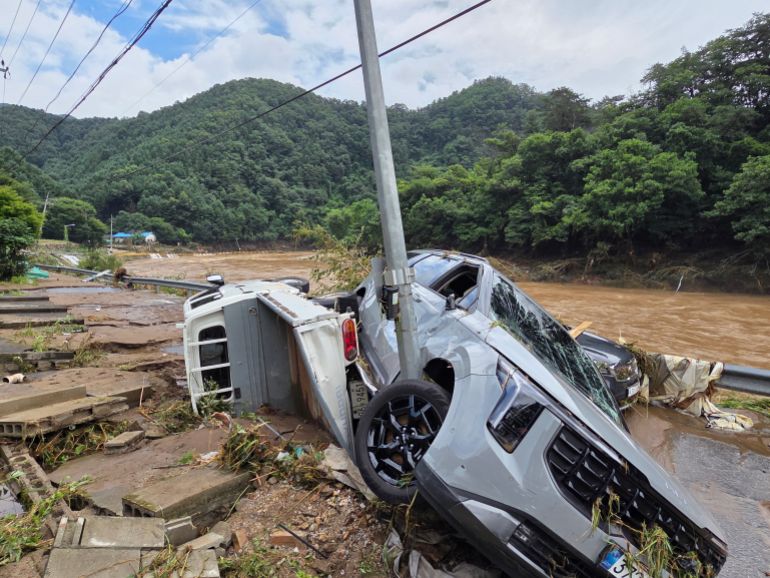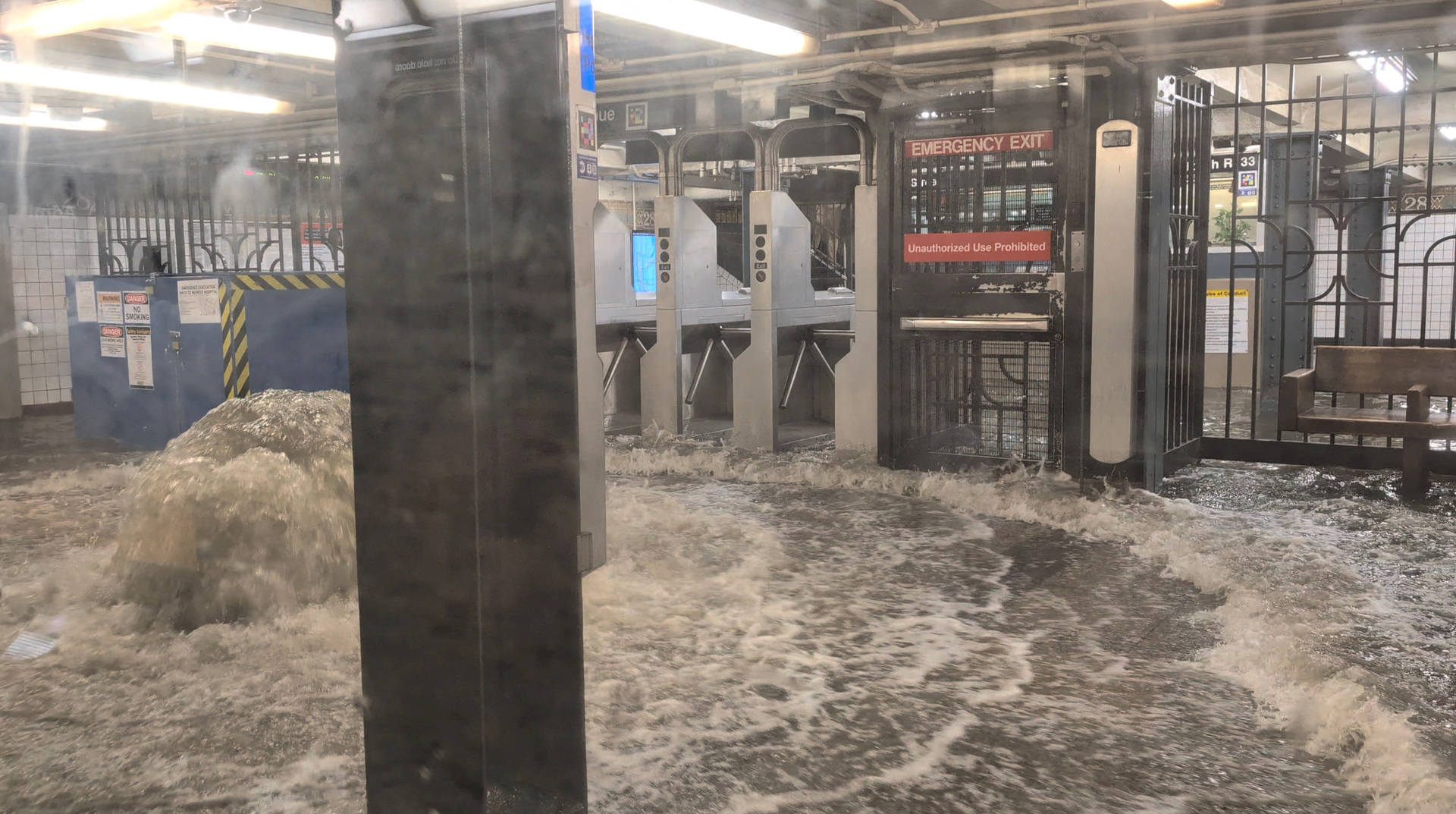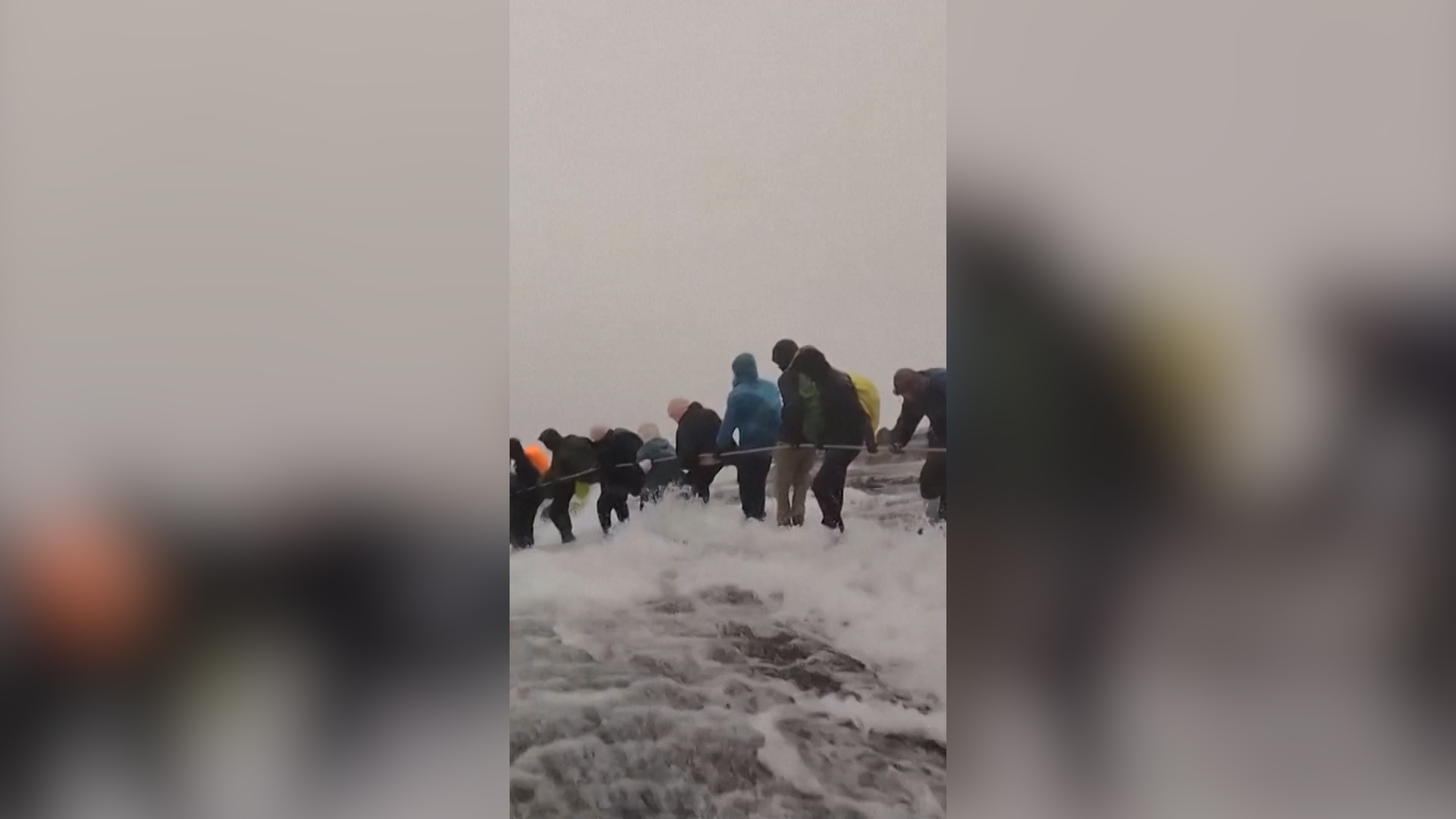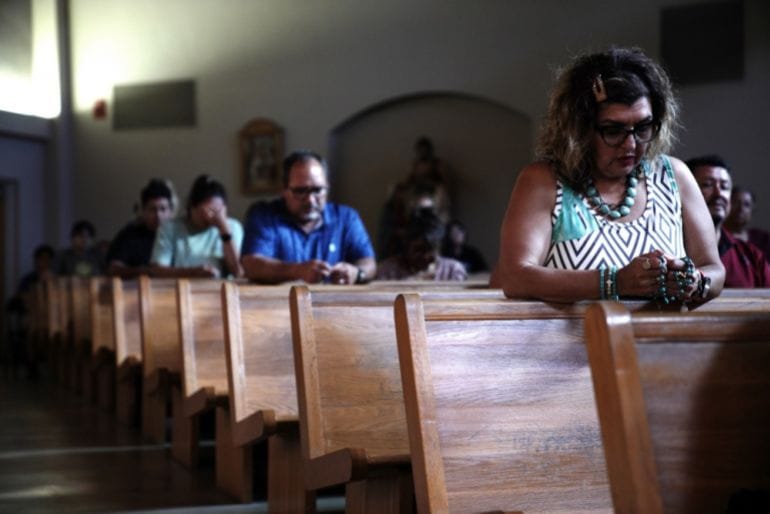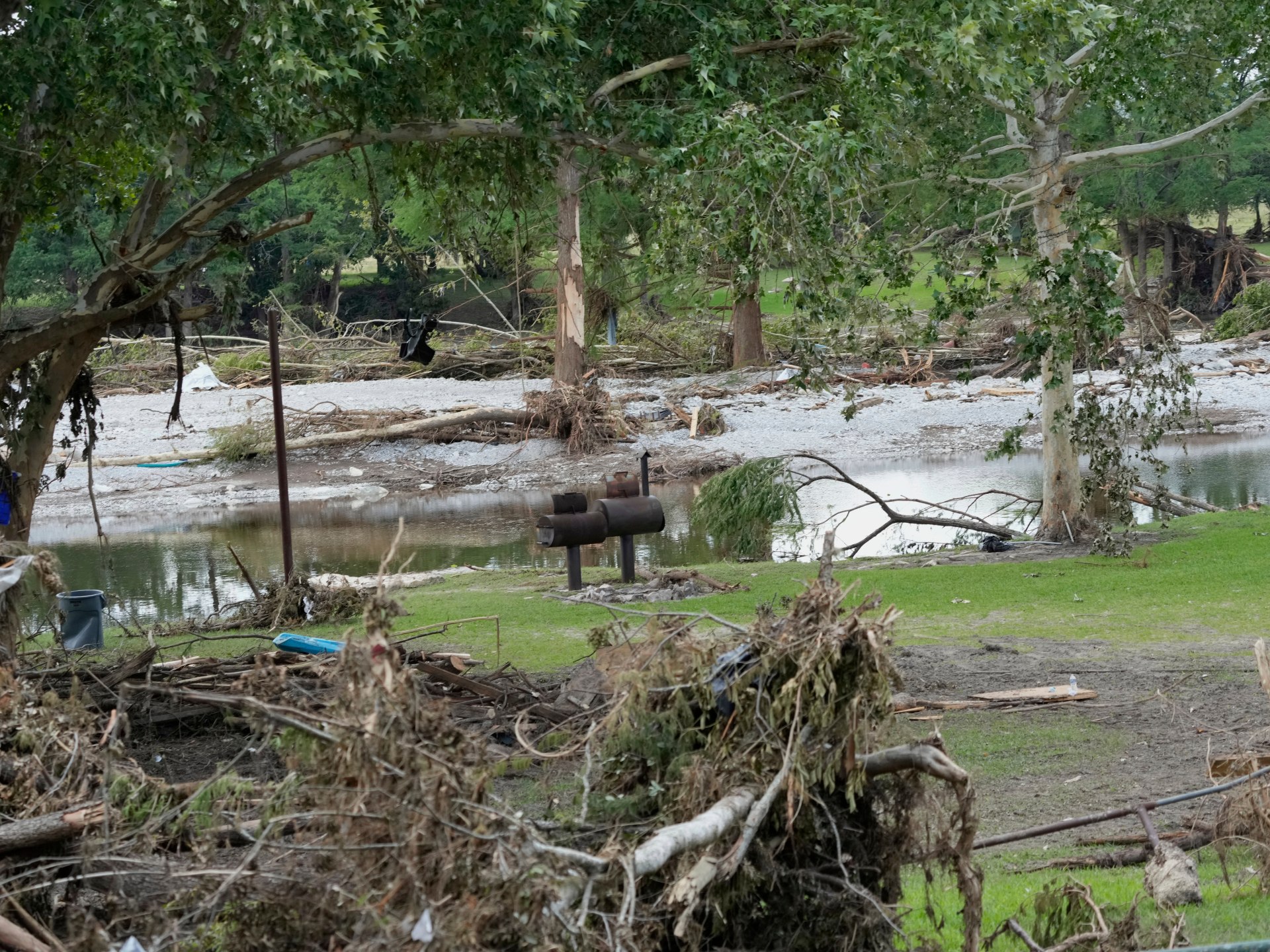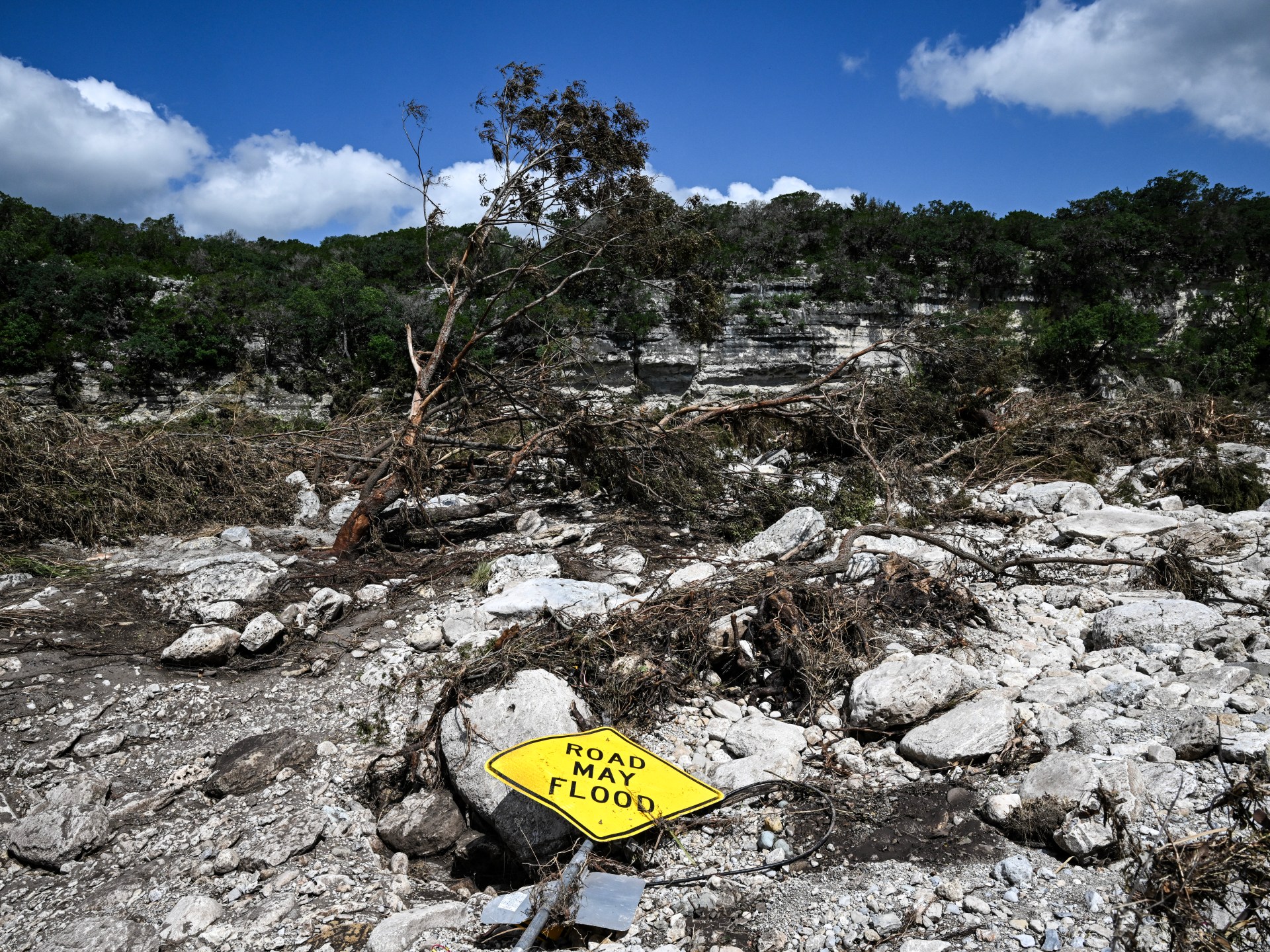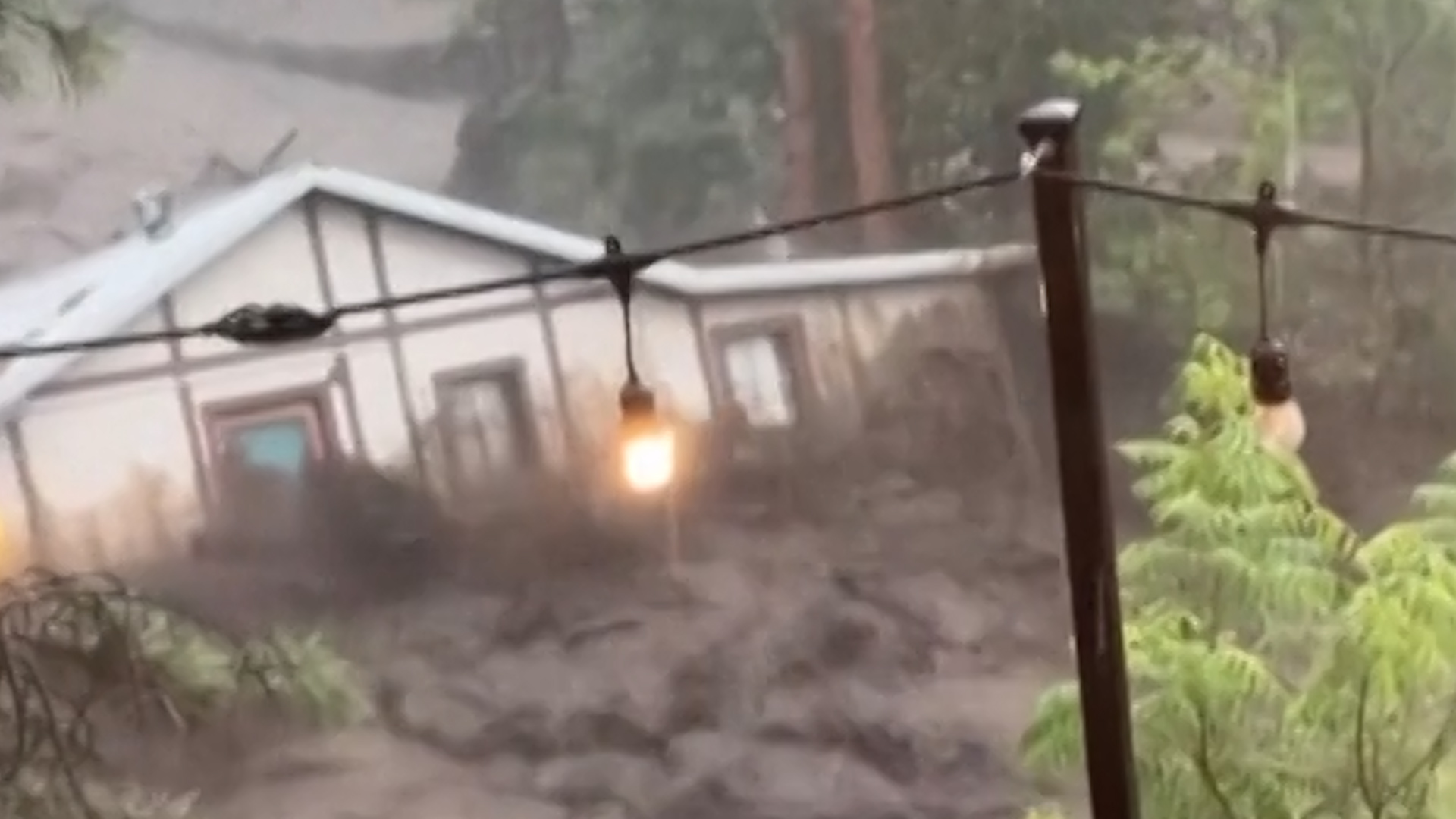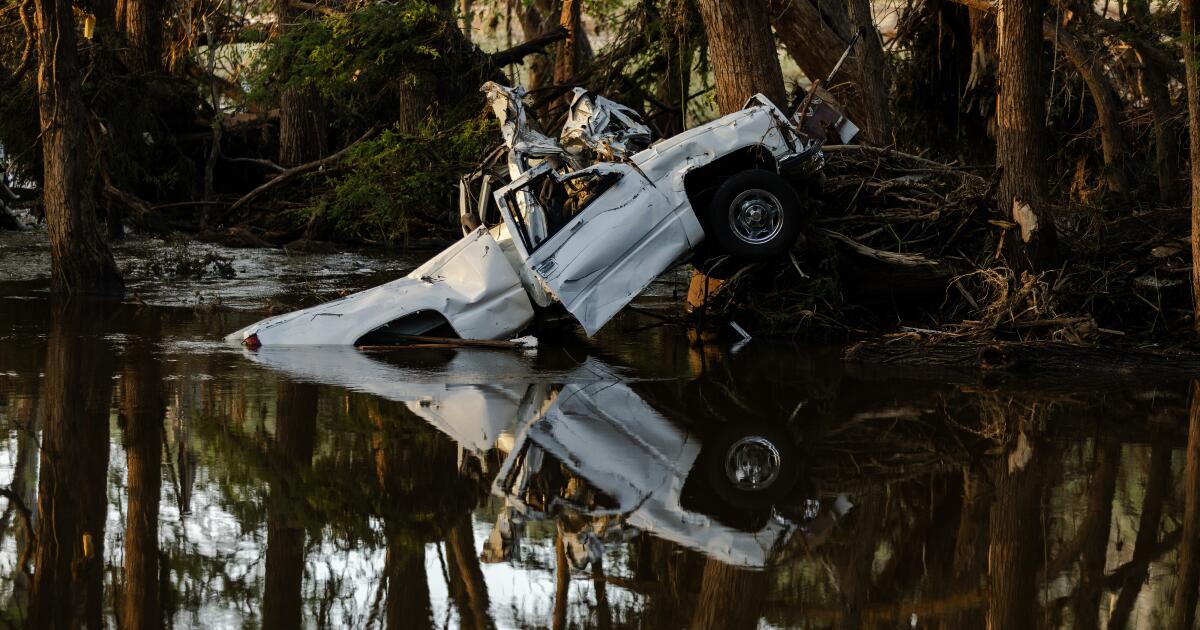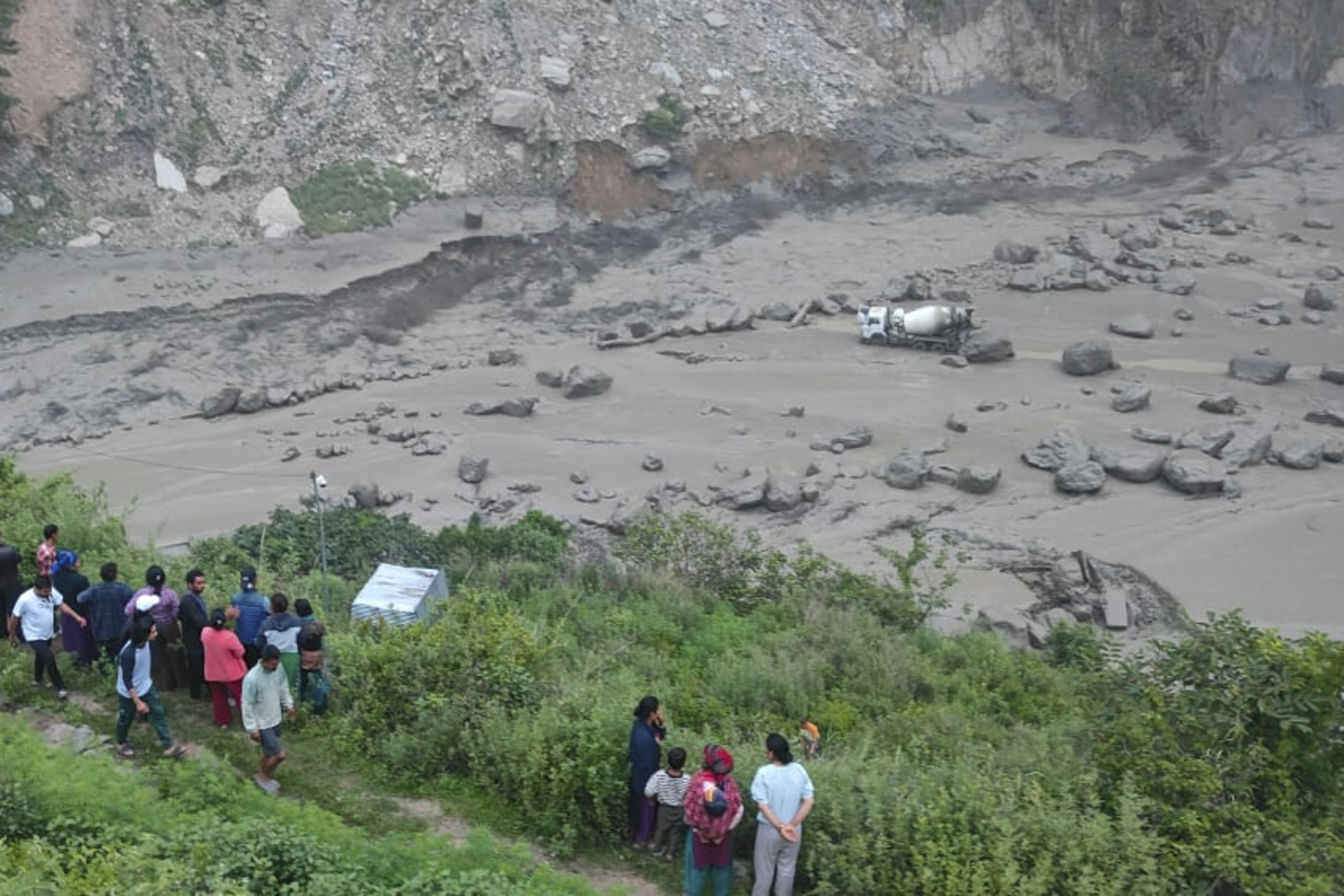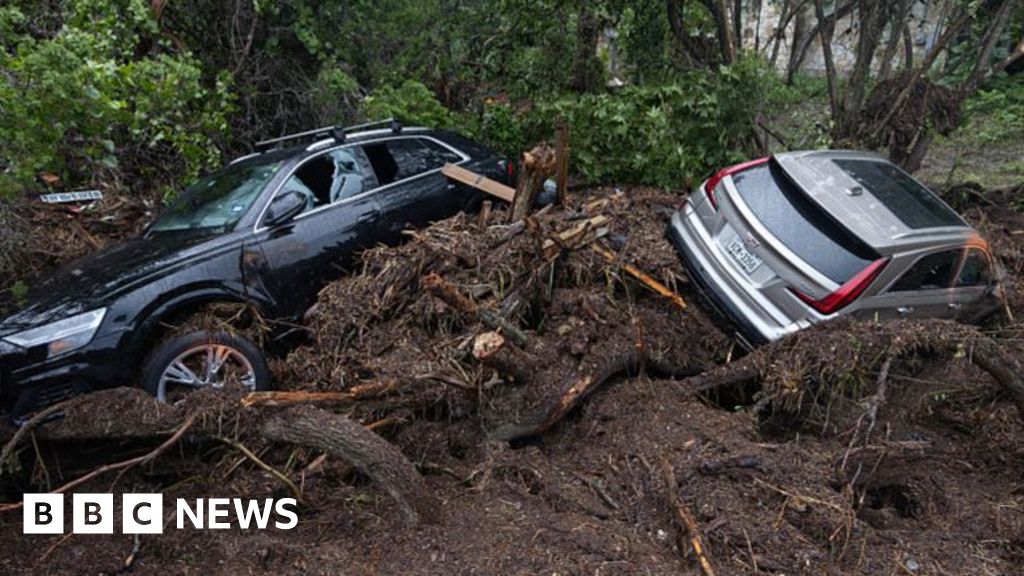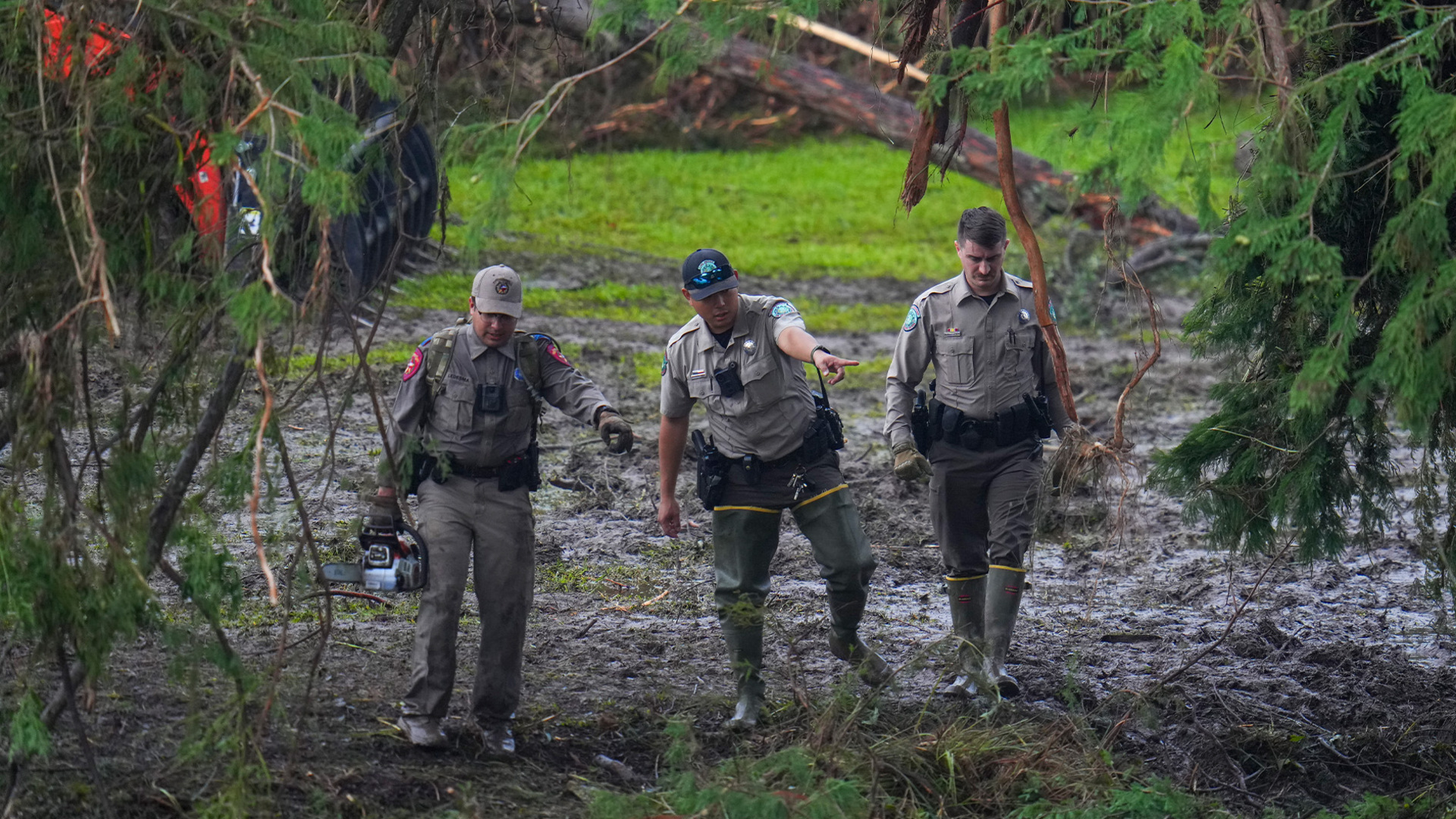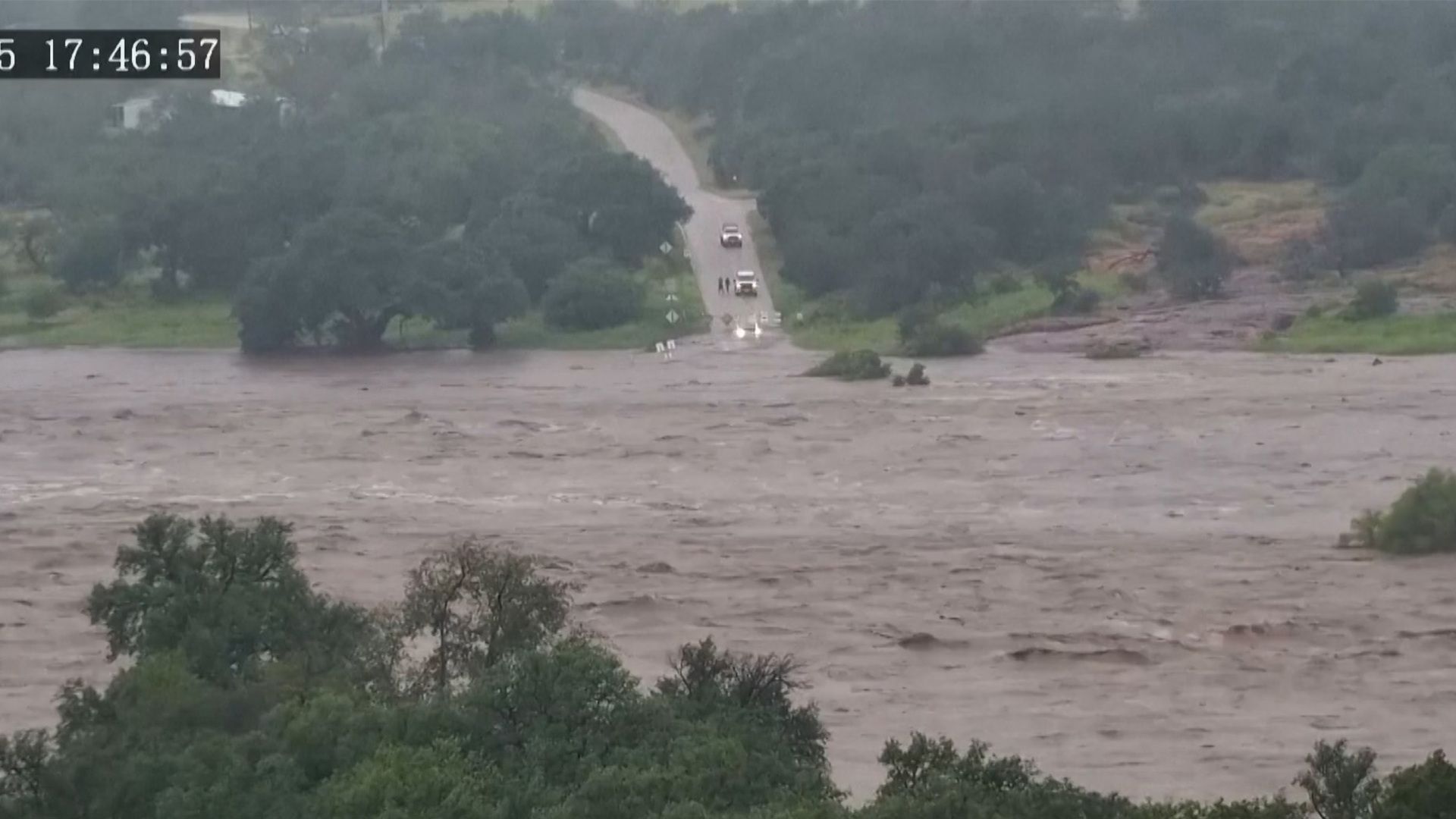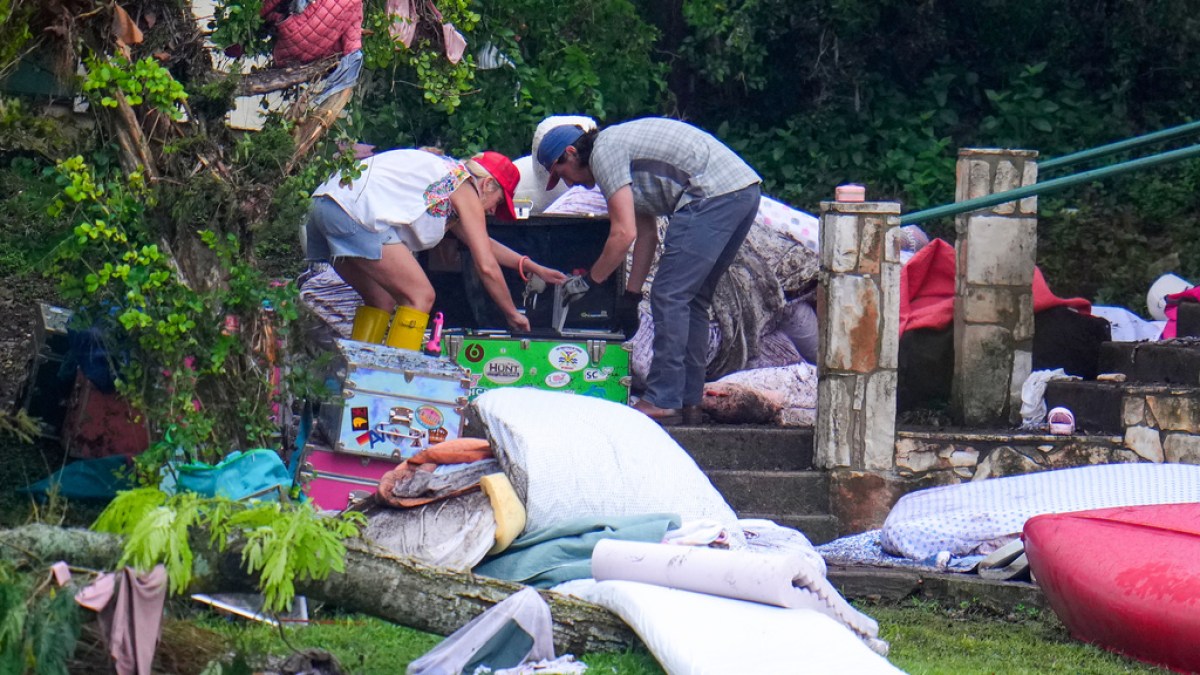In the aftermath of the devastating floods that swept through the Texas Hill Country in Texas in the United States, a tight-knit community is mourning the loss of at least 110 lives to flash flooding – including 27 at Camp Mystic, an all-girls summer camp situated along the Guadalupe River.
Camp Mystic bore the brunt of the floodwaters, but the region is home to several popular sleepaway camps and youth facilities serving families from across Texas, including Hill Country Youth Ranch. Tony Gallucci, who has lived in the area for more than 40 years, works there.
“We’re gonna have some clearing [of debris like fallen trees] to do, we’ve got a log jam and that kind of stuff,” Gallucci said. “We do have one road [in their facilities] that buckled; it’ll have to be repaired.”
The ranch sits uphill from the river, unlike Camp Mystic, where 2.4 metres (8ft) of water filled cabins with sleeping campers in the early morning hours of July 4, and the Guadalupe River rose more than six metres (20ft) in two hours. Among the dead is camp director Dick Eastland, who perished trying to save the girls from the rushing floodwaters.
Flash flooding is a recurring threat in this part of Texas. The Hill Country, including Kerr County where the camp is located, has thin soil and limestone bedrock that limits rain from soaking into the ground, funnelling it quickly into rivers and creeks. Storms fuelled by gulf moisture and clashing air masses often drop several inches of rain in a short span, overwhelming the terrain.
That was the case last week, as deep tropical moisture in the wake of Tropical Storm Barry, which had just struck southern Mexico, fuelled intense rainfall. The Guadalupe River has flooded catastrophically in the past, with notable incidents in 1978, 1987 and in 2002, raising longstanding concerns about the vulnerability of riverside camps. Because this risk is well known, the latest tragedy has renewed scrutiny over what went wrong – and whether it could have been prevented.
A policy problem
Earlier this year, the Department of Government Efficiency (DOGE) cut 600 positions at the National Weather Service (NWS) – the agency tasked with forecasting storms and issuing warnings. As a result, many local offices lack the staff needed to adequately inform the public. In Houston, 30 percent of NWS positions remain vacant.
“Accurate weather forecasting helps avoid fatal disasters. There are consequences to Trump’s brainless attacks on public workers, like meteorologists.” Connecticut Senator Chris Murphy said in a post on X.
However, both the San Antonio and San Angelo NWS field offices, which oversee forecasting for the region that includes Kerr County, were adequately staffed at the time of the flash floods, and the office actually had more staff than usual, with five people on duty instead of the typical two.
Murphy’s office did not respond to Al Jazeera’s request for comment.
The NWS issued a flash flood watch at 12:41am Central Time (05:41 GMT), warning that “excessive runoff may result in flooding of rivers, creeks, streams, and other low-lying and flood-prone locations. Creeks and streams may rise out of their banks”. As conditions worsened, a flash flood warning was issued at 1:14 am, and a flash flood emergency was declared after 5:30am local time.
Still, Tom Fahy, legislative director for the National Weather Service Employees Organization, told The New York Times that the San Angelo office remains understaffed overall, missing a forecaster, a meteorologist-in-charge, and a senior hydrologist. Fahy did not respond to Al Jazeera’s request for comment.
The recent job cuts by DOGE could hinder the ability of NWS offices nationwide to predict and respond to future severe weather events. There are additional reductions to the NWS included in the tax bill signed into law by President Donald Trump last week.
The legislation rescinds funding for the National Oceanic and Atmospheric Administration (NOAA), which oversees the NWS. Those changes were drafted by the Senate Committee on Commerce, Science, and Transportation, chaired by Texas Senator Ted Cruz.
“Only a shameless and soulless partisan hack would tie the One, Big, Beautiful Bill to the Texas floods. The funds rescinded had nothing to do with weather forecasting, but were instead used for ‘heat awareness’ campaigns, ‘Green Collar jobs,’ creating a climate resilience plan based on an Indian tribe’s ‘traditional knowledge’ of weather, building a new visitor’s center at an aquarium, and ‘citizen science’ around fishing. None of the rescinded funding was obligated for any existing operations or forecasting activity,” Macarena Martinez, communications director for Senator Cruz, said in a statement.
The bill actually includes funding for additional “Weather Observing Systems” but only specifies those to be set up at airports. The legislation also maintains current funding levels for the NWS.
“After getting a 41 percent increase in its budget in the last decade, NOAA now spends roughly $3bn annually on weather forecasting, research, and related infrastructure. Even the Biden administration had proposed to cancel millions in future radar research, in part because much of the project has already been completed and would explain why, after nearly three years, the funds remained unspent. There’s simply more productive ways to be faithful stewards of public money and improve weather forecasts than continuing to overfund every possible NOAA account,” Martinez added.
The Biden administration proposed cuts to NOAA in March 2024. The Trump administration’s fiscal year 2026 proposal would cut funding for climate research, which would cut the development of new weather forecasting technologies that would, contrary to Cruz’s claims, impact weather forecasts.
The White House did not respond to Al Jazeera’s request for comment.
Poor flood infrastructure
Texas has increased funding for flood-related infrastructure projects in recent years, but those efforts have largely been reactionary rather than preventive.
“The loss of life is tragic. While we can’t predict every storm, we do everything we can to prepare. Texas is strong and takes every disaster seriously,” Coalter Baker, head of the Gulf Coast Protection District (GCPD), a state-funded agency responsible for coastal resiliency planning, told Al Jazeera.
The Texas Gulf Coast has experienced some of the most devastating flooding events in US history. After Hurricane Harvey – a storm in August 2017 so intense that the NWS had to add new colours to its rainfall maps – the state created the Texas Infrastructure Fund. Since the fund’s launch, it has allocated roughly $669m in funding, though only one project was located in Kerr County.
“After Tropical Storm Allison in 2001, we invested in flood prevention that still protects us today. Hurricane Ike in 2008 led to the Coastal Texas Project – the largest US Army Corps of Engineers effort ever – to defend our coast and communities. And after Hurricane Harvey in 2017, we created a first-of-its-kind flood infrastructure fund to reduce future risk. We’ll keep working – federal, state, and local – to protect lives, homes, and our economy,” said Baker, who previously served in the Trump administration and worked in the Texas Office of State-Federal Relations alongside Governor Greg Abbott.
But in this part of Texas – more than 480 kilometres (300 miles) inland – flood infrastructure improvements haven’t materialised. According to a new Houston Chronicle investigation, Kerr County, where the affected camp is located, requested state funding three times to improve its flash flood warning system. The state rejected its requests.
Instead, the state deferred the responsibility to the county. Kerr County Judge Rob Kelly told The New York Times taxpayers would oppose providing local funding because of the cost.
In April, the Upper Guadalupe River Authority (UGRA), a state-funded government agency, granted a more than $72,000 contract to develop a flood warning system despite concerns being raised almost a decade ago. The UGRA did not respond to our request for comment.
This comes as the Texas state house failed to pass a bill this year that would have improved the state’s emergency communication infrastructure. Among those who voted against the bill was Representative Wes Virdell, who represents Kerr County. Virdell did not respond to our request for comment.
Following the recent floods, Texas Lieutenant Governor Dan Patrick said the state will now pay to install a flash flood warning system, despite the state previously denying such requests.
“That’s going to be one of the issues that we begin to address in less than two weeks in the state legislature. We’re going to address every aspect of this storm to make sure that we’re going to have in place the systems that are needed to prevent deadly flooding events like this in the future.” Governor Greg Abbott said in a news conference on Tuesday.
Abbott’s office did not reply to Al Jazeera’s request for further details.
When asked about the current system, Judge Kelly told reporters at a Friday news conference, “We do not have a warning system.”
“This is the most dangerous river valley in the United States, and we deal with floods on a regular basis. When it rains, we get water. We had no reason to believe that this was going to be anything like what’s happened here. None whatsoever.”
Kelly did not respond to Al Jazeera’s request for comment.
Texas did not release its first statewide flood plan until last year.


